Collaborative art as joint production by two or more artists is a typical style among sound, video, and performance artists. Many artists are changing the concept of art into something that can be engaged in by more than individual artists alone. Last week, I wrote about how Web 2.0 has come to play an integral part in the expansion of new art forms because it increasingly enables artists from all across the globe to work collaboratively, communicate ideas, and connect with others who share similar interests. Art production in virtual 3D worlds brings together people with different knowledge and skills. A few examples are highlighted here.
[youtube:https://www.youtube.com/watch?v=K-U8voQXY2Q]
Burning Life, a festival of community, art, and fire in Second Life exemplifies collaborative art in virtual 3D worlds. It was first held in 2003 and is inspired by the real-life Burning Man festival that takes place in the Nevada desert. Second Life’s Burning Life 2009 remained true to the spirit of the Burning Man. A cooperatively built space, it arose from a virtual 3D desert to serve as a shining example of creativity and community. When it ended, every scrap was removed, leaving only a bare desert floor. The Ten Principles of both Burning Man and Burning Life underline the spirit guiding the virtual art that once was:
- Radical Inclusion: Anyone may be a part of Burning Man/Life.
- Gifting: Burning Man/Life is devoted to acts of gift giving.
- Radical Self-Reliance: Burning Man/Life encourages the individual to discover, exercise, and rely on his or her inner resources.
- Communal Effort: Creative cooperation and collaboration.
- Leaving No Trace: Leave nothing behind.
Many of the artists featured in my series of posts for Art21 have participated in previous Burning Life festivals and their current work embodies these principles to varying degrees. Although the Burning Life 2009 work exists no mor,e you can find several galleries on photo sharing and video sharing sites.
The Arts in Second Life playlist on YouTube includes work from artists who have joined the Caerleon sims art collective. From Through the Virtual Looking Glass:
Eight friends from five different countries founded Caerleon Isle on February 12, 2008 as an artists’ colony and an experiment in utopian community. The project has grown since then to include four Caerleon sims (short for simulators) in the virtual world Second Life and five in ReactionGrid, a region within the virtual world OpenSim.
Artists who reside at the Caerleon sims have been conducting focused experiments into the nature of several aesthetic-technological dimensions, more specifically networked collaboration. Georg Janick AKA Gary Zabel writes,
Because virtual worlds reside on servers connected to the Internet, they offer unprecedented opportunities for networked collaboration among artists as well as between artists and audiences.
Sowa Mai AKA Stephen Beveridge is a Scottish-born artist living and working in New York City. He is part of Aequitas, a group creating virtual art as networked collaboration. Sowa contributed information about his virtual art experiments, including a link to his recent blog entry on networked collaboration. He writes,
The kind of virtual art which results from this process-oriented, common-goal driven work is no less than transcendent. It is always greater than the sum of its parts because it is imbued with the spirit of cooperation and understanding. Simply because of the willingness to shift perspective, to being open to seeing things as the collaborators see them, the work has the power to shift perspectives in the audience. It can remain a powerful expression of one idea, while also serving another without loss of intensity or focus.
The collaborative aspect in the creation of the work fosters a collaborative nature in the work itself. The essence of collaborative projects lure the audience into interaction and participation, as that is the very nature of its being. A core belief in the respect for the perspectives of others allows the finished piece to grant access from a myriad of angles and welcomes the participant without coddling or patronizing.
[youtube:https://www.youtube.com/watch?v=S2pY_13tbn8]
Aequitas, Selavy Oh, Misprint Thursday, and others collaborated to create a “field of voices” to demonstrate the shift of perception from the real world to perceptually immersive 3D space in Second Life. This SL installation is on view as part of Through the Virtual Looking Glass. Several semi-transparent, white 3D columns populate this open expanse of virtual land. My avatar walked through these columns also referred to as flex prims (flexible 3D objects). Flex prims are not solid, so an avatar is able to pass through them like cellular diffusion while both avatar and object remain intact. Avatar teleportation and flight, flexible, and reflexive/reactive objects are all part of virtual 3D world physics. These physics make virtual art impossible in real life and help to construct immersive experiences. Sowa writes,
The visitor is presented with a beautiful expanse of white columns not unlike a circuit board or a graveyard. Jumping down into the field, we are treated to the voices of a diverse group of real people belaying the sterile perception of Second Life and social media in general by reminding us there are people behind the virtual avatar on the screen. The effect is quite touching and before you know it, the visitor falls through the floor and is treated to a soothing light show as he/she walks through the amusing, touching, and clever proximity-activated voices in the poles.
For Your Voice As Art! visitors receive simple instructions for submitting their voices, which are either recorded in-world or sent via email. Your Voice As Art! inspired my foundation-level Visual Language class at Massachusetts College of Art and Design. My students recorded their voices for submission to Sowa Mai. While I demonstrated how the project worked, Sowa paid us an impromptu in-world visit and provided a brief history of the project as networked collaboration. When you visit Your Voice As Art! as part of the Through the Virtual Looking Glass exhibition, you can hear the students’ voices among several others from all over the world.
[youtube:https://www.youtube.com/watch?v=NBX5uDKGSDg&feature=related]
Misprint Thursday AKA Karina is a real-life and SL artist who actively explores the meaning of “joint production” through her art. Misprint writes,
My work is usually site-specific interactive installation. These works explore signs and symbols in communication. The art I create manifests in many forms including sound, machinima, sculpture, drawing, painting, photography and performance. A curious interest is developing with the dichotomy of rural and urban, since I live in a rural area and take on some very urban ideas. My overall core interests include visual and behavioral patterns; visual conceptions of modes of communication; modern and historic iconography; and relationships to natural and built environments.
V-TV Verbal Television, another Caerleon Networked Collaborative project, is a text-activated particle sculpture. The sculpture responds in particle effects to the text it receives by chat, e-mail, and Twitter. Misprint Thursday collaborated with Oberon Onmura and Cinco Pizzicato, who contributed their scripting expertise for this project. V-TV examines the beauty in both the visual translation of text and the limitations of text communications in these forms.
Misprint Thursday’s artistic process is rich in emotive artistic sensibility. Her intention is not to pigeonhole observers to a specific narrative but to leave room for interpretation and exploration. Some of her collaborations have been more formal while others exemplify the type of playful teamwork she prefers. One example of collaborative art as play is her work with Oberon Onmura and Arrow Inglewood, for a site specific installation called White Line that exhibited at Pirats Art Network. It was based on an original music composition Misprint wrote and transformed into a virtual 3D sculpture. I had an opportunity to meet Misprint/Karina in real life at the April 7th UMB Harbor Gallery opening of Through the Virtual Looking Glass. We also chatted in Second Life about her thoughts on networked collaboration. Here’s a portion of the chat transcript:
Nettrice Gaskins: What kind of collaboration do you prefer?
Misprint Thursday: The kind that is based in play and the spirit of the game atmosphere. As I mentioned, it sort of develops from the idea of curation, performance, and collaboration – it all sort of meshes together. I had a big collaboration at Burning Life with Miso Susanowa called The Roof is Gone. It started with a vocal recording that I sent to her to play with and she turned it into an amazing composition. It was very moving and haunting.
NG: Please say more about The Roof is Gone as art collaboration. I’m intrigued.
MT: So, from the song, we developed a proposal for Burning Life, curated by White Lebed. Then Miso and I collaborated on a highly interactive build and I made a machinima with the song that was like a moving painting that was applied to the surfaces. There is something synergistic and community-based that happens. The idea is that not one person can know it all. I think that the key to a strong collaboration is determining who is doing what, not in a rigid sense but in the idea of building and evolving off each others work to see what happens next. That is the exciting part. It’s like Christmas. You don’t know what you are going to get.
NG: I love that analogy!
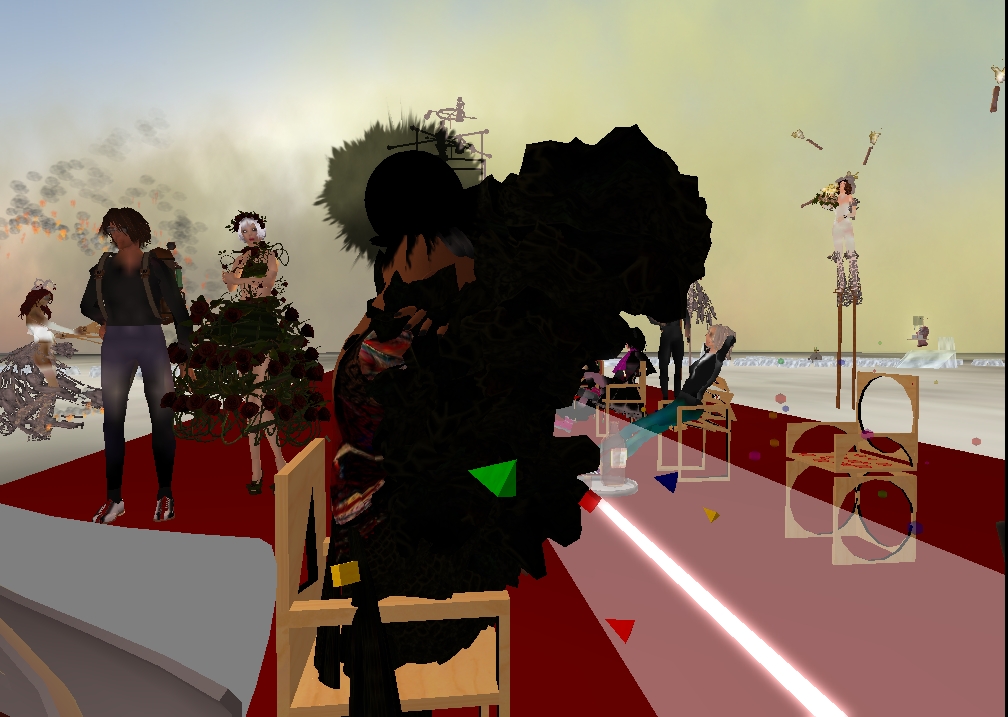
Misprint Tuesday and Selavy Oh, "Wedding Performance." Photo by the author, 2009. © Some rights reserved.
Misprint Thursday has worked/is working on several collaborative art projects. 01.10.10 A Wedding Performance was a virtual wedding between Misprint and Selavy Oh, who was recently featured in Responsive Art & Evolving Artificiality. Several artists were invited to create and share virtual 3D art as signs and symbols associated with the wedding tradition. This live event included a special augmented reality performance of Technesexual by Azdel Slade and Echolalia Azalee, who were featured in Performative Interventions last year. Misprint stated that this “performance within a performance” is reflective of the layers of experience in the development of collaborative art in virtual worlds. Check out these blog photos.
Recently Misprint was invited to be an artist-in-residence by IBM to create RUN 909 in Reaction Grid, another virtual 3D world. Ultimately this work will be interconnected between Reaction Grid and Second Life. The project is a team effort between Misprint and Solo Mornington, based on a shared history of collaboration and artistic sensibility and Solo’s in-depth knowledge of scripting. You can hear the “soundscape” here: https://www.indabamusic.com/songs/show/686445. Networked collaboration is a big part of Misprint Thursday’s work, in that is often involves the community aspect of creating and exploring art in virtual worlds.
This month, I have spent a fair amount of time exploring the art of the artists featured in Through the Virtual Looking Glass and in other immersive art spaces. I am struck by the variety and aesthetic quality of the work. Also, I am impressed by the varying degrees of collaboration artists are engaged in to make these mixed, or perceptually immersive 3D and 4D visions a reality. These artists are compelled to collaborate in virtual 3D worlds and communicate through online social networks for the same reasons as everyone else. There is still time to experience Through the Virtual Looking Glass. Instructions are included on the official exhibition website. I hope to see you there!

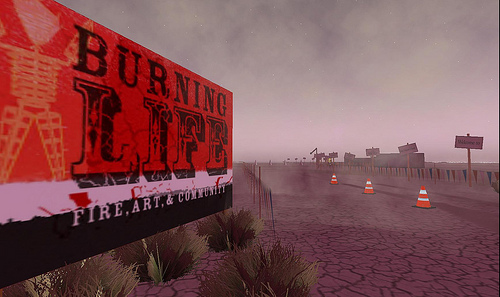
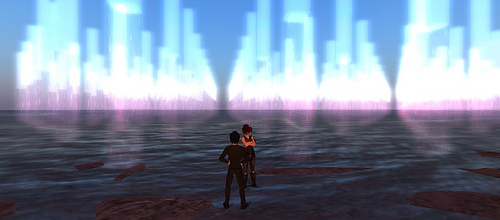
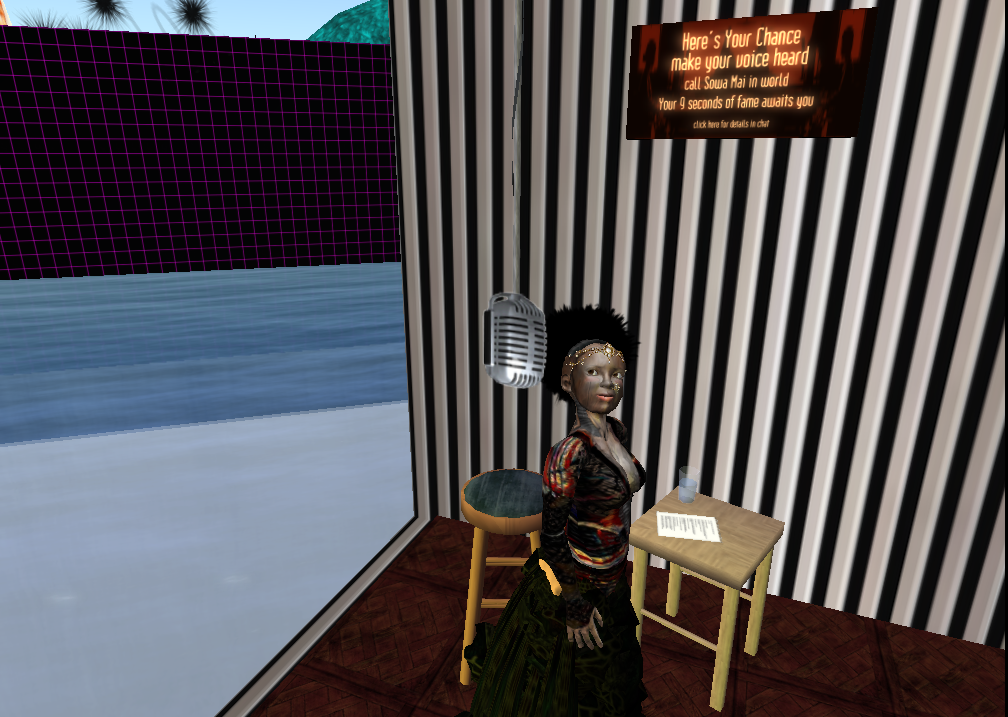
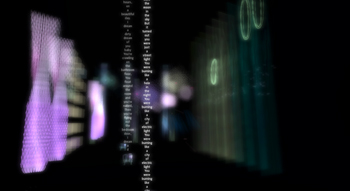
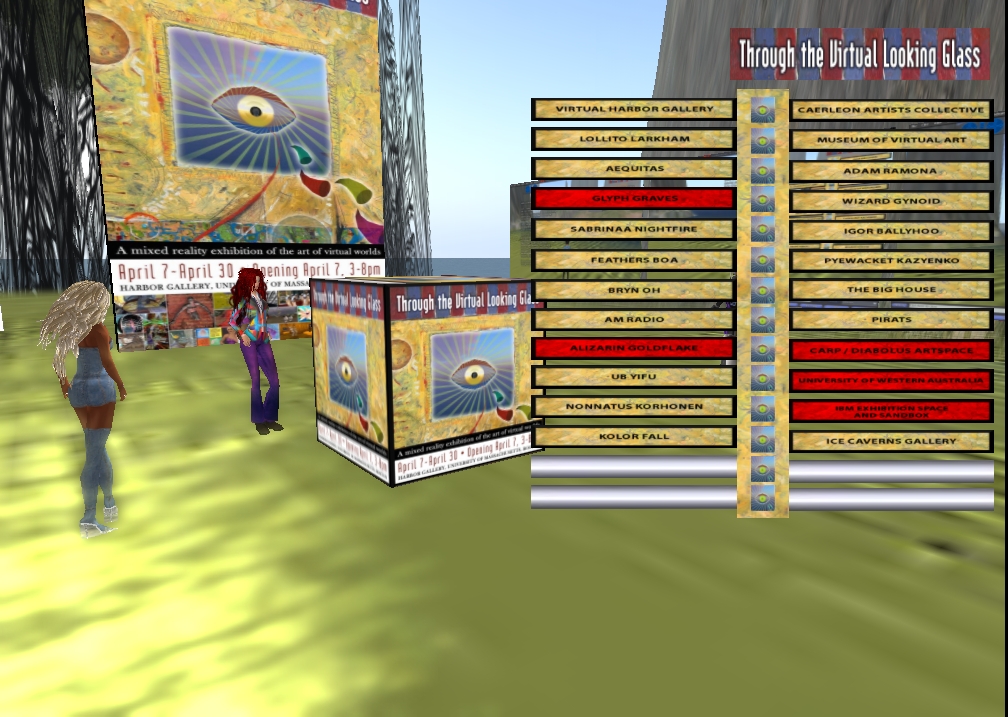



Pingback: Brooklyn is Watching » Blog Archive » art:21- Call + Response: Collaborative Art in Virtual 3D Worlds
Pingback: Convergence Culture and Art21 « Social Virion
Pingback: Art21 2009 to the Present « SL Art HUD Blog Thingie: